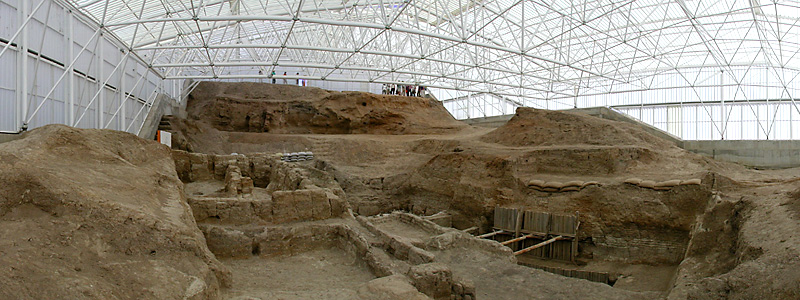
The Neolithic site of Çatalhöyük was first discovered in the late 1950s and excavated by James Mellaart between 1961 and 1965. The site rapidly became famous internationally due to the large size and dense occupation of the settlement, as well as the spectacular wall paintings and other art that was uncovered inside the houses.

Since 1993 an international team of archaeologists, led by Ian Hodder, has been carrying out new excavations and research, in order to shed more light on the people that inhabited the site.

Since 1993 an international team of archaeologists, led by Ian Hodder, has been carrying out new excavations and research, in order to shed more light on the people that inhabited the site.
"This year we received the results of a set of AMS radiocarbon dates undertaken at the Oxford Radiocarbon Accelerator Unit. The dates were concerned with the areas excavated in 1999 and are particularly important as they cover the earliest archaeological deposits excavated so far. This produced dates centring around the period c.7,300 to 7,150 calibrated BC for the earliest known archaeological activity at the site (below). [...] We can now estimate that Çatalhöyük was occupied for between 950 and 1,150 years and that individual buildings were typically occupied for between fifty and eighty years, although it appears that they were actually of longer duration earlier on and that this decreased through time." [Radiocarbon Dating, Newsletter 8 of The Çatalhöyük Research Project, Dec 2001]

Read more...
[As additional information, be aware that two of the main sponsors for this project are Boeing and Shell. Yes, that Boeing and that Shell. 'Finders, keepers...']







.png)





No comments:
Post a Comment